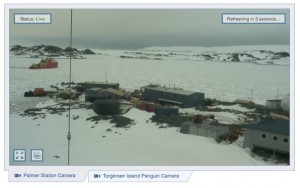With the government shutdown over, we finally received word from the National Science Foundation (the funding agency that supports our project) that our project was still on schedule. We were all very relieved. Palmer Station-based research survived the shutdown as we are the easiest United States Antarctic field station to get to. However, many research groups based out of McMurdo and South Pole lost an entire year of data. This also seriously affects graduate students, whose entire theses may depend on one field season in the Antarctic. This is a huge blow to research on climate change, and we wish the best to those researchers while they can get back on their feet.
With regards to our project, our supplies have all been shipped. They are all shipped to Port Hueneme, California, then placed on a large cargo ship that cruises all the way down to Punta Arenas, Chile. This takes 3-4 months. The cargo is unloaded in Chile and placed on our main research vessel, the R/V Laurence M. Gould (the LMG for short), which brings it down to Palmer Station. Abigail, a graduate student with Dr. Brad Seibel at University of Rhode Island, is on her way down to Palmer Station right now with the first set of cargo. You can track the research ship, the LMG here: https://www.marinetraffic.com/en/ais/details/ships/9137337/vessel:LAURENCE_M_GOULD. The LMG is docking at Palmer as I type this (see picture below). You can also watch at: https://www.usap.gov/videoclipsandmaps/palwebcam.cfm. This website also has some great information (see links on the left side of the page) about Antarctic weather, the U.S. research stations, The Antarctic Treaty, research in Antarctica, and opportunities for travel to Antarctica.
Speaking of weather, it has not been cooperating with scientists at Palmer this season. Just after the government shutdown ended and Palmer Station reopened, ice blew in and enclosed any open water for at least a few miles offshore. There have been research groups there since mid-October, and they have not been able to conduct any sampling from the small ships, or zodiacs, yet. This week looks a lot better, and they have been able to finish their boating courses that are required for anyone riding or driving in a zodiac at Palmer Station. Fingers crossed the weather holds out for the remainder of the season!
The rest of our team (myself, Dr. Brad Seibel, and a Rutgers undergraduate student Ryan Fantasia) leave for Antarctica on Dec. 28. We will arrive at Palmer on Feb. 4, 2014. As the season progresses, we will blog about everyday life at Palmer Station and the diversity of research occurring in Antarctica, and of course we will show you the beauty of the continent and its inhabitants. So please stay tuned, much more to come.


Comments are closed.